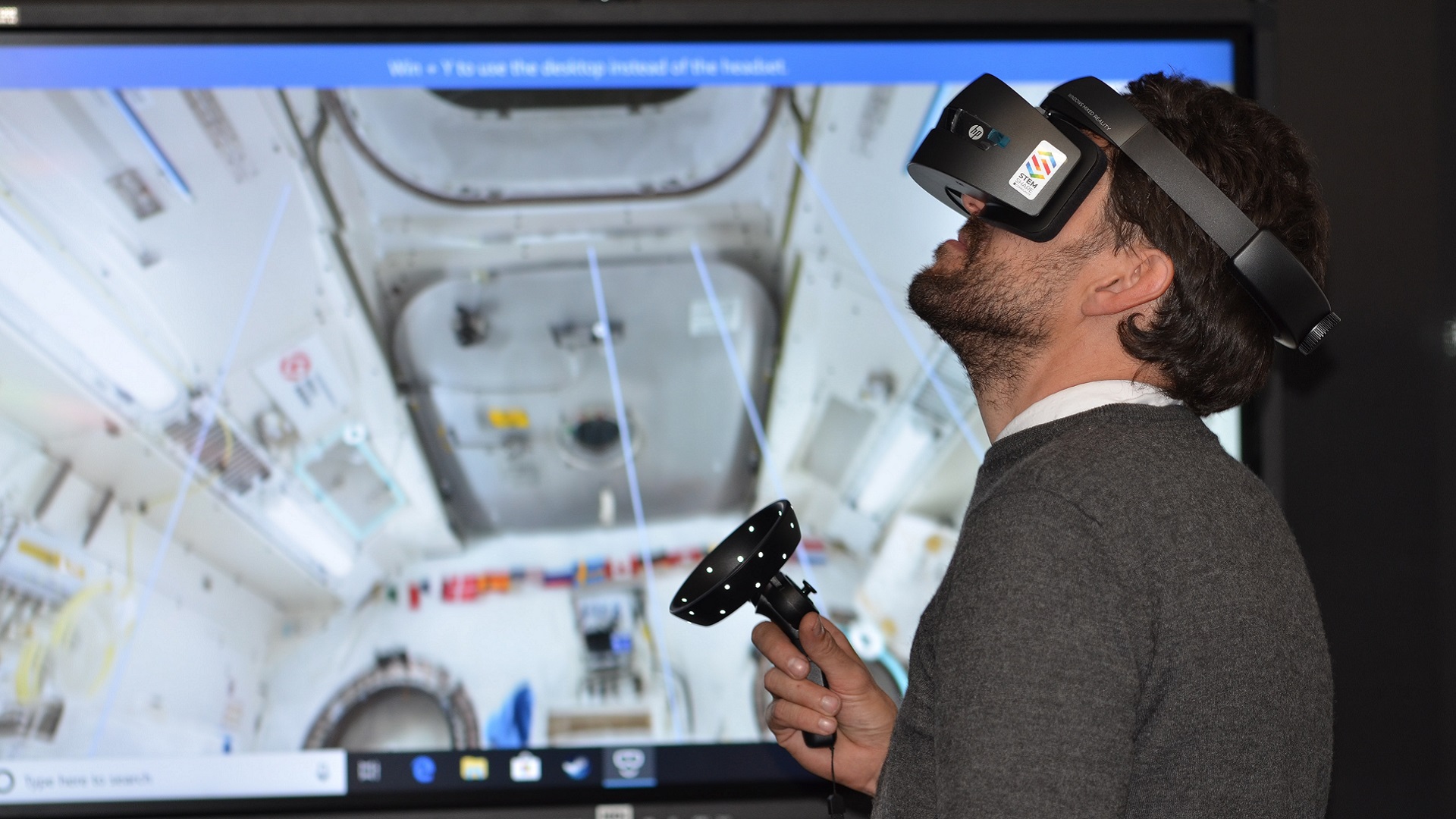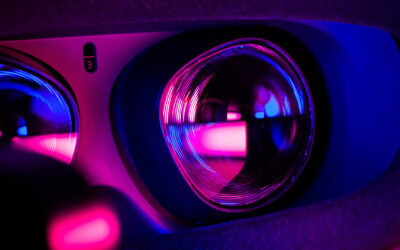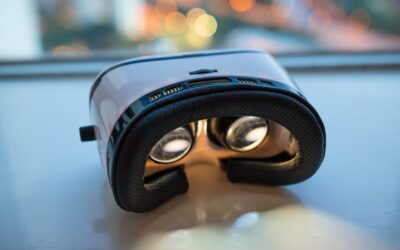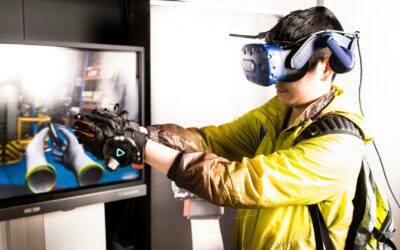Augmented Reality (AR) and Virtual Reality (VR) technologies have been around for decades but are quickly becoming commonplace in business and society at large. Both offer new ways to interact with the physical world by creating immersive, interactive experiences that blend digital and real-life experiences. The manufacturing sector in particular is beginning to embrace the potential of AR/VR as a way of improving efficiency and reducing costs.
This article will explore the topics of AR and VR, explain their capabilities, and outline the ways in which they’re set to revolutionize manufacturing over the coming decades.
An Overview of Augmented Reality and Virtual Reality
Augmented Reality (AR) and Virtual Reality (VR) are buzzwords in the world of tech. But what do they actually do?
Augmented Reality is a technology that overlays digital elements onto the real world. AR headsets combine a user’s real-world environment with virtual elements, such as 3D images and text, to create an enhanced view of reality.
Virtual Reality (VR) on the other hand, is an immersive technology that transports users to a completely digital environment. In VR, you can explore and interact with three-dimensional objects, and the environment can be highly realistic or completely fantastical.
Both Augmented Reality and Virtual Reality offer a new way for people to interact with the world around them. They are used in a variety of applications, from gaming and entertainment to medical and industrial use cases.
How AR and VR Can Revolutionize Manufacturing
How much can AR and VR change the manufacturing industry? The amazing thing is that we’ve yet to find the answer. These two technologies represent a monumental step forward in human ingenuity. They have the power to open a digital new world of opportunities, many of which can be beneficial to the manufacturing sector. Take a look below at a few examples.
Employee Training
Virtual Reality serves as an efficient and effective way of training employees for work in certain areas of manufacturing. The technology can emulate various conditions and operational stressors to mentally prepare staff for real-world scenarios. From working in dark rooms to responding to steam leakages, it gives trainees the opportunity to experience measured, guided walk-throughs of their jobs’ most pressing tasks without having to worry about mistakes during the learning process.
Knowledge and Skills Transfer
As more workers retire and fewer take their place, the manufacturing sector is facing a very real and potentially damaging skills gap in the years ahead. Data estimates that the number of unfilled, skilled positions could reach 2.4 million by 2028, while openings for skilled production staff will become three times harder to hire for in even less time. This represents a massive threat to the sector’s future if it wishes to maintain current growth and reach its future innovation goals.
While the best solution to a talent gap is always training new people and enriching human talent, doing so can take time. In the interim, many experts believe that AR could act as an insurance policy by making it easier for outgoing staff to record their years of skill and pass it down to the next generation.
For instance, some companies have begun piloting programs in which longtime maintenance workers wear headsets as they perform various parts of their jobs. These headsets capture everything they do, essentially creating a POV-style how-to video that can be rewatched and experienced first-hand by oncoming prospects.
Schematics
Traditionally, maintenance workers have had to switch between their task at hand and reference schematics when performing repairs and replacements. Paper-based plans can’t really be taped up anywhere — they’re also likely to rip, fold or become damaged in factory environments.
With Augmented Reality, everything is consolidated into one plain of view. Administrators can overlay fixed content like drawings and schematics over what a worker sees in real time. This reduces their need to look away while also making it easier to complete tasks without confusion.
Quality Assurance
Human quality assurance checks are effective, but will never be 100% perfect. AR is an opportunity to enhance them with computer-aided scans that focus on less obvious details like part tolerances and diagnostic measurements. It can also be used to evaluate the condition of machines in real time, which helps maintenance staff quickly pinpoint any issues and resolve them before they become serious. This amounts to fewer errors in production and ultimately better efficiency and product quality.
Assembly
Assembly is a complicated job, so much so that sometimes even experienced workers have trouble grasping new techniques. Add AR goggles into the mix and it becomes much easier. This equipment can superimpose visual instructions before staff’s eyes as they learn different parts and processes. They ensure that workers are effectively following along while also reducing the amount of time it takes to do so.
The Pros and Cons of AR and VR
AR and VR are becoming more and more common in business and industrial settings. However, like any technology, there are some pros and cons to consider before investing in either.
Pros
Increased efficiency and productivity: AR and VR can help automate processes, reduce errors, and enable faster training for employees.
Improved safety: AR and VR can be used for virtual simulations that can help personnel practice dangerous tasks without putting themselves in harm’s way.
More data-driven decisions: AR and VR can help visualize large amounts of data which can lead to better decision making.
Cons
High startup costs: Investing in AR and VR technology can be expensive, so companies should make sure they are investing in the right technology for their needs.
Potential security risks: AR and VR can put sensitive data at risk, so companies must have proper cybersecurity measures in place.
Lack of user adoption: AR and VR require personnel to change their behavior, so the technology must be properly implemented and accepted in order for it to be successful.
Virtual Reality and Augmented Reality represent an opportunity for the manufacturing sector, offering the potential to increase efficiency, cut costs and spur innovation like never before. They also prove that a human-led Industry 4.0 is possible. These new technologies can be used to enhance existing talent and give them the advantage they need to excel in the face of stiff competition.
Sign up today for a free Essential Membership to Automation Alley to keep your finger on the pulse of digital transformation in Michigan and beyond.
Automation Alley is a World Economic Forum Advanced Manufacturing Hub (AMHUB) for North America and a nonprofit Industry 4.0 knowledge center with a global outlook and a regional focus. We facilitate public-private partnerships by connecting industry, education and government to fuel Michigan's economy.




